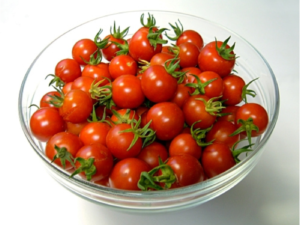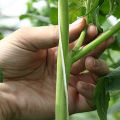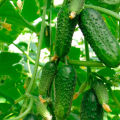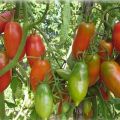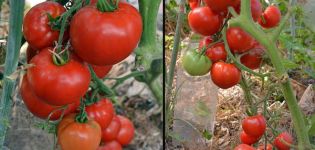How to properly form tomatoes in a greenhouse and open field
There are certain schemes how to form tomatoes in a greenhouse. They will allow you to complete the process in a timely manner and without errors. The formation of the central stem is carried out only in tall varieties of tomatoes. The procedure allows you to get a good harvest and reduce the risk of infection.
general information
Tomatoes are a thermophilic vegetable crop, but summer is not always pleasant with favorable weather. Gardeners are increasingly growing vegetables in a polycarbonate greenhouse. Under the shelter, plants are not afraid of temperature fluctuations, precipitation, wind and other unfavorable factors.
Almost all kinds tomatoes require pinchingwhich means cutting off the side branches. Standard types are an exception. This is a variety determinant group of tomatoes... Growing standard tomatoes is very easy and simple. They do not require the removal of side branches, the formation of a central trunk and tying to a support.
Tomato bushes of the standard type have a strong, powerful stem, which stretches up to 60 cm. 4 fruiting brushes are formed on the stem.
Tall varieties of tomatoes, without the formation of the main stem, begin to branch in different directions, forming many flowers that do not have time to develop into fruits. Therefore, the formation of tomatoes in the greenhouse is considered a mandatory procedure. Cutting off excess, weak inflorescences will lead to the fact that all forces will be directed to the development of a full-fledged crop.
Passionking is carried out for three main reasons:

- unlimited growth of the bush leads to the development of numerous lateral flowering branches and ovaries, which need more nutrients and energy for excess greenery;
- a large number of leaves leads to insufficient penetration of sunlight and air to various parts of the plant;
- a formed tomato bush gives a high-quality and abundant harvest.
To carry out the procedure correctly, you need to distinguish well between an ordinary sheet and a stepson. Stepsons grow between the main stem and leaves. First, the leaf itself appears, and above, after a while, a stepson begins to form. It turns out that they grow from one point. Tear off the upper sprout without touching the lower one.
How to form a bush, everyone decides independently. For tomatoes outdoors, two trunks are permissible, and in a polycarbonate greenhouse, you can grow with one stem. This is suitable for tall types of tomatoes. Determinant tomato varieties usually have two main stems left in the greenhouse, while open field tomatoes can have three stems.
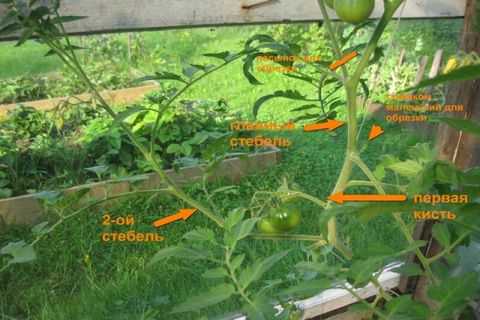
If the stem is formed correctly, it will slow down the growth of the vegetable crop and increase the amount of the crop.Growing tomato bushes in a greenhouse and shaping, consists of pinching, pinching and other manipulations.
Main barrel formation rules
As soon as the first extra shoot is formed under the central brush with inflorescences, you need to not miss the moment and pluck it in time. A shoot longer than 5 cm will be more difficult to pluck and damage the stem. Therefore, tomatoes should be inspected regularly.
The formation of tomatoes in the greenhouse is carried out according to a special scheme, during which some recommendations must be followed. How to form tomatoes in a greenhouse are important tips.
- The first shaping is carried out 7-10 days after the seedlings were planted in greenhouses. During this time, the seedlings have time to get stronger, take root and adapt. The formation of a tomato bush in a greenhouse for the first time involves the determination of the main stem, on which there is a brush with inflorescences. As soon as the shoots grow to 5 cm, they are plucked.
- The subsequent formation of bushes is carried out with an interval of 11 days. During these days, new side branches that have appeared will not have time to outgrow. It is better to carry out sunbathing in the morning or evening hours.
- You need to break off or cut off the side branches not at the root, but leaving a small shoot about 2 cm long. This will prevent the re-formation of stepsons.
- The formation of indeterminate tomatoes can be carried out in several stems.
- When pinching, you need to leave shoots with large, strong flowers. The best option is to have three brushes. Shoots that form in the root zone must also be disposed of.
When forming a tomato, one central trunk is left in one stem, the lateral branches are cut off. As a result, not the number of fruits increases, but their mass.
How do you form two-stem tomatoes? If it is decided to form a plant in 2 stems, then the central trunk with inflorescences and the stem located closest are left. When formed into three stems, the trunk is accordingly left below the second. When forming tomatoes into two stems, the branches that will form on the stems must be removed.
Variety of varieties and appropriate care
How to form tomatoes correctly also depends on the type of tomato seeds selected. All tomato varieties are divided into three different groups. They can be planted both in closed and unprotected ground. When describing the formation methods, the seed variety is taken into account.
The determinant tomato cultivar reaches a certain height and stops growing (can grow up to 150 cm). But sometimes this can be a negative point. The early formation of the top leads to a decrease in the number of crops. Bushes are often medium-sized.
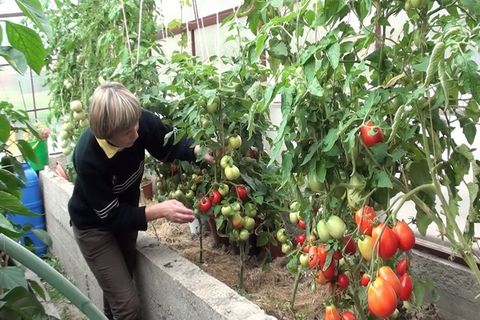
It is advisable to leave one stem at semi-determinate tomato varieties... How to form tomatoes in the open field in 1 trunk? The traditional scheme involves removing unnecessary branches and leaving one stem for fruiting. To make the fruits ripe sooner, pinch the top at the end of the growing season.
Formation of tomatoes in a greenhouse according to a scheme involving the preservation of several shoots on the stem at once. As soon as shoots are formed on the side branches, the point of their growth must be pinched. Tomato bushes have a central fruiting stem and lateral brushes.
The formation of a tomato bush in a greenhouse can take place in stages (the method is suitable for semi-determinate varieties of tomatoes in a heifer). With this method, pinching is periodically carried out, leaving one additional shoot in the middle of the central stem. As soon as the fruits are tied on it, the growth point of the main stem is pinched.
Growing determinate tomatoes is easy.After the formation of several brushes with inflorescences, growth stops. Determinant tomatoes can also be formed to form two or three main stems. Two-stem tomatoes are easy to form. The stepson, who is under the main brush, is not plucked, but left for the second stem. For the third trunk, a process is left, which is located under the second main trunk.
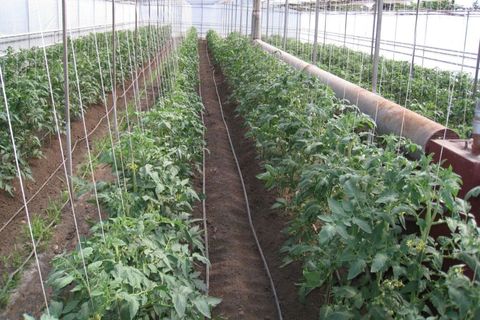
The formation of determinant tomatoes in the greenhouse must be carried out according to all the rules, leaving an additional branch on top. She can save the plant in adverse situations and act as the main stem.
It is advisable to form indeterminate tomatoes in one stem. If there is a lot of space in the greenhouse, the formation of a tomato can also be carried out in two stems. The second main branch is formed from a lateral branch that grows under the first cluster with inflorescences. Shoots are plucked, leaving 4 brushes.
Additional procedures
After the first pinching has been carried out, you need to carry out the tying procedure to the support. A peg is driven in or tied to trellises near each tomato bush. Without this procedure, the long stem will break under the weight of fruits and greenery.
Indeterminate varieties of tomatoes are not complete without a pinching procedure. This will make the plant compact without the formation of new ovaries. Pinching is usually done twice.
When the required number of brushes with flowers has grown on each stem left during formation, it is necessary to cut off the top at the central stem. The upward growth of the plant stops, and all nutrients are sent to the fruit.
Many seasoned gardeners believe that all leaves should be removed, leaving the trunk bare. This will reduce the risk of contracting fungal and viral diseases. All nutrients will be directed directly to the tomatoes. Sunlight and air will circulate freely. Gardeners with this method leave only a few sheets on top.
Supporters of the other version believe that removing all the leaves disrupts the movement of nutrients and photosynthesis. They remove only the lower leaves, as well as yellowed and diseased leaves.
All the procedures described above have a positive effect on the development of vegetable crops, gardeners often advise not to forget about them: “I always form any types of tomatoes into two or three stems. This allows for more harvest. At the same time, the fruits have a dense skin that does not crack. The pulp is juicy, sweet, not watery. "

